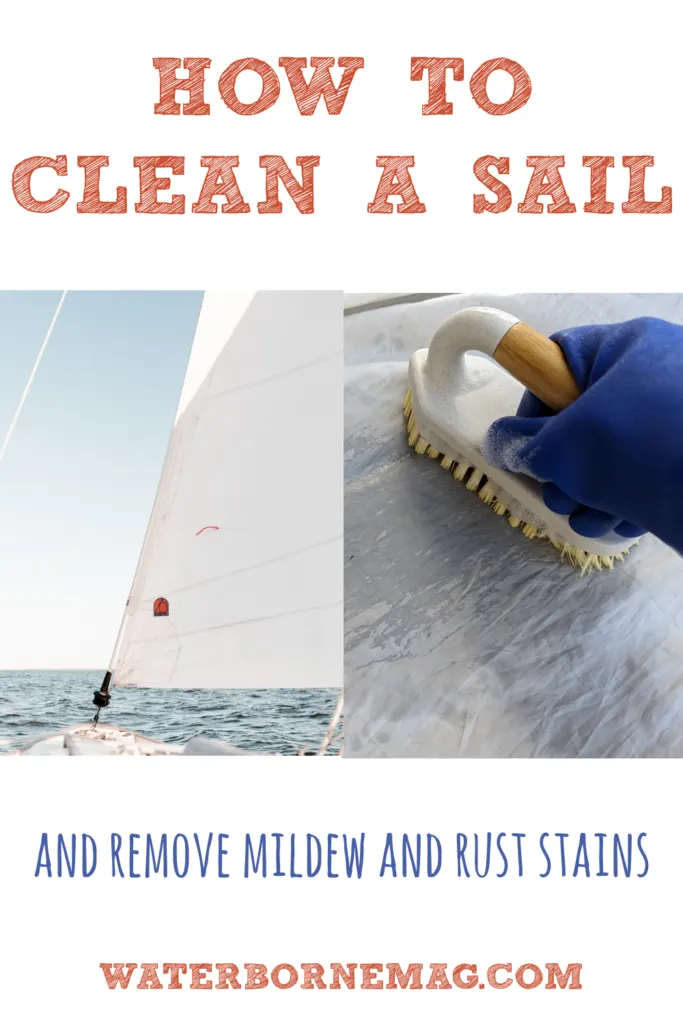Regular sail cleaning will help maintain the longevity of your sails and keep them looking their best, but be warned! Use the wrong product or technique and you could do more harm than good. There are horror stories about people poking their fingers through spinnakers that were rinsed in a chlorinated pool.
If you’re concerned about doing damage, one option is to leave the cleaning to the professionals. Drop your sail at your local sail loft where they will clean it for a fee. However, most sail cleaning can be easily done at home or at the marina.
If you’re a die-hard DIYer you might even like to try making your own homemade boat cleaners from scratch.
So, how to clean sails without mishap? I’ve rounded up expert advice and put a few of their techniques to the test.
A quick note that this post contains affiliate links (so if you purchase through a link we’ll earn a small commission). The opinions are our own.
1. Know your sail material
The first step in the sail cleaning process is to know what type of sail material you’re dealing with. Just as you wouldn’t put wool on a hot cycle in the washing machine, different sail cloths have different cleaning requirements.
Using the wrong cleaning agent or method can dramatically reduce the strength of your sail and do irreparable damage. For instance, a properly diluted bleach solution, while safe on Dacron, can destroy Nylon, Kevlar, and other Aramids.
If you own laminate or composite sails (or have any questions about your sail’s construction) reach out to your sailmaker for professional guidance.
2. Rinse
Most sailmakers recommend regularly rinsing your sails with fresh water. This will remove dirt, salt, pollution, and pollen. It also helps prevent mildew growth. You can do this with a garden hose.
The key is to thoroughly dry your sails afterward and store them in a well-ventilated area.
3. Soak
If rinsing doesn’t do the trick, try soaking embedded dirt and stains.
- Find a suitable soaking container. A baby pool or dinghy works well for small sails, like a windsurfer sail, or small sections of large sails.
- Fill the container with warm water and a few drops of mild detergent (e.g., dish soap).
- Soak the affected areas. It’s generally safer to soak longer in mild solutions than use more aggressive chemicals and methods.
- Once you’ve finished soaking, rinse liberally with clean water.
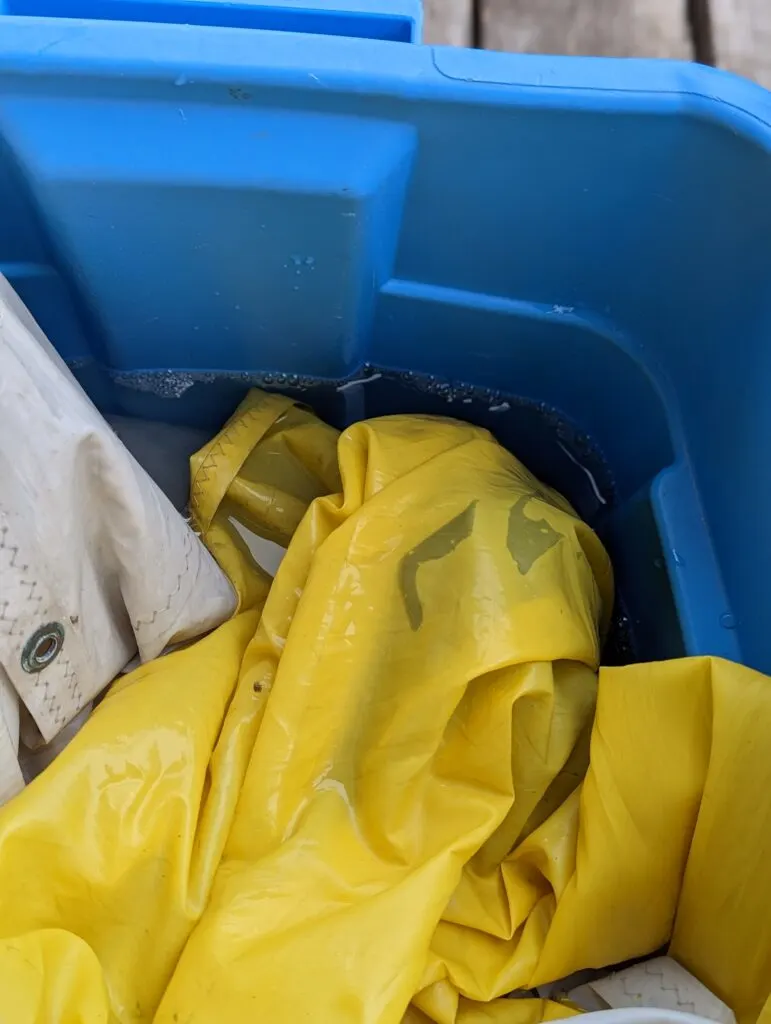
4. Scrub (gently)
According to Jim Grant, founder of Sailrite, mechanical cleaning methods cause cloth breakdown which can stretch the sail and can have the same effect as several weeks of hard use. You should never put your sail in the washing machine!
So, be gentle! Place sail on a smooth surface—no gravel parking lots, please—and use a sponge or soft brush with mild detergent, or a specialized sail cleaner, like Starbrite Sail and Canvas cleaner to gently remove dirt.
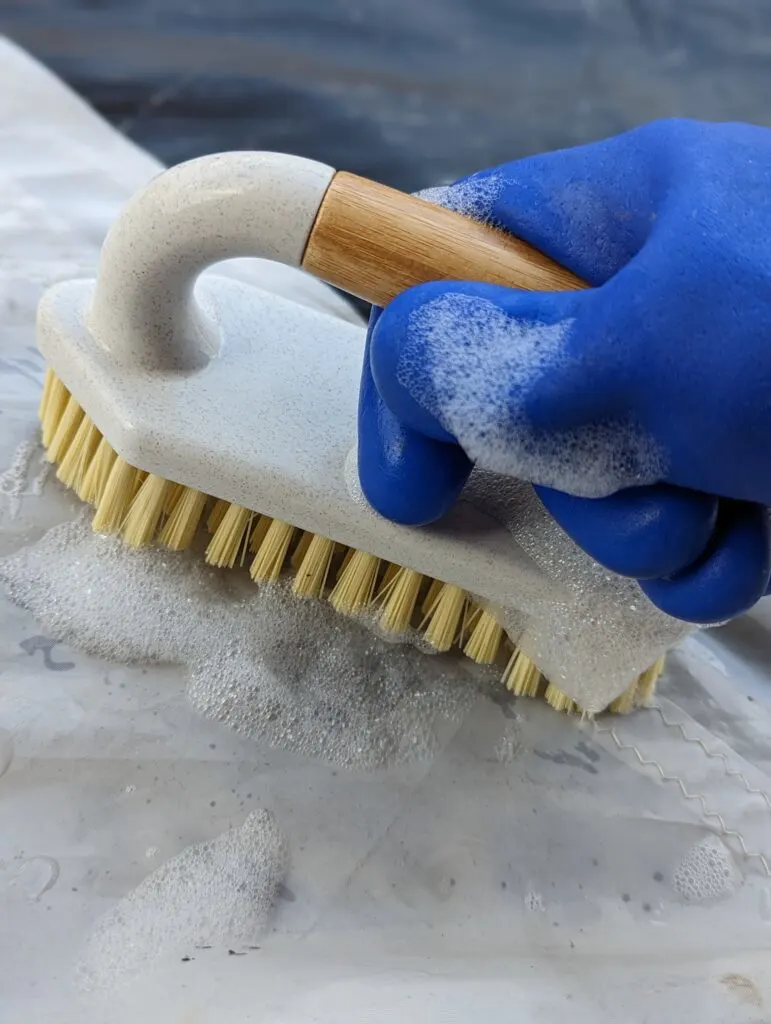
5. Dry
Properly drying your sails is critical for avoiding mildew growth. If you pack your sails away wet, even slightly damp, you’re risking returning to a mildewy mess.
Sails should be air-dried on a calm day. If you hang your sails to dry and allow them to flog in the wind it will break down the material and shorten its life.
Sun exposure can also be helpful for air-drying, but too much UV causes damage, so don’t leave your sails out for days on end.
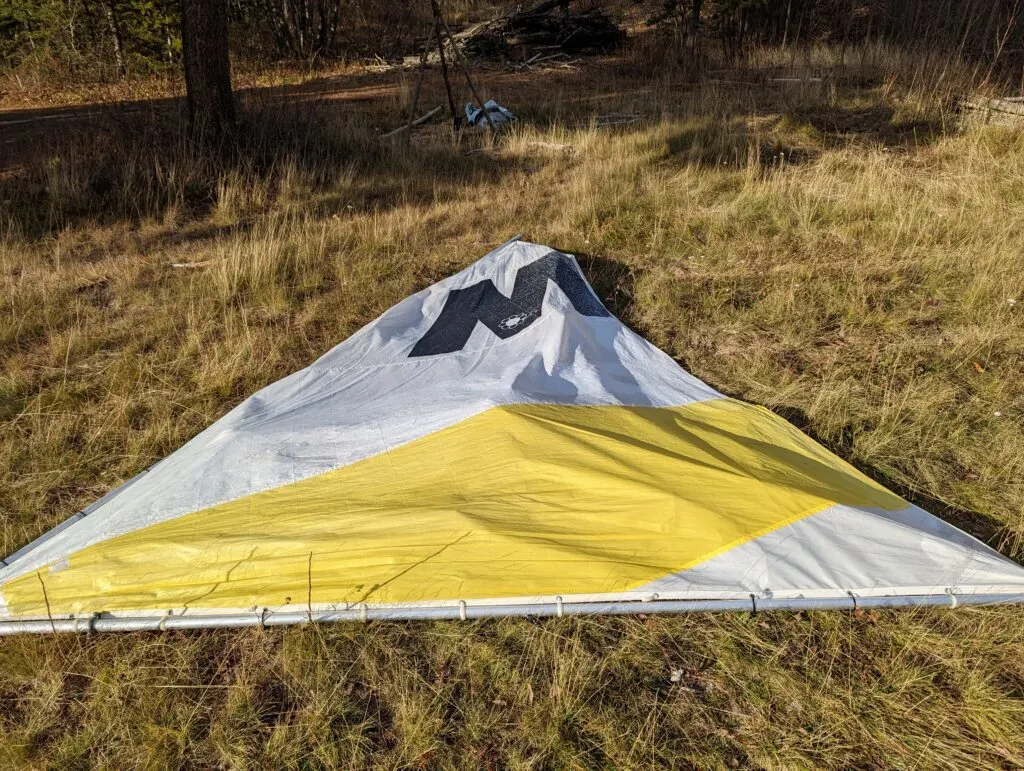
6. Tackle stains
Maybe you got a great deal on a set of used sails with an unsightly rust stain. Or stored your beautiful new sails for winter and returned to find a bloom of black mildew—ughh!
For these common stubborn stains, you’ll need to take a more targeted approach.
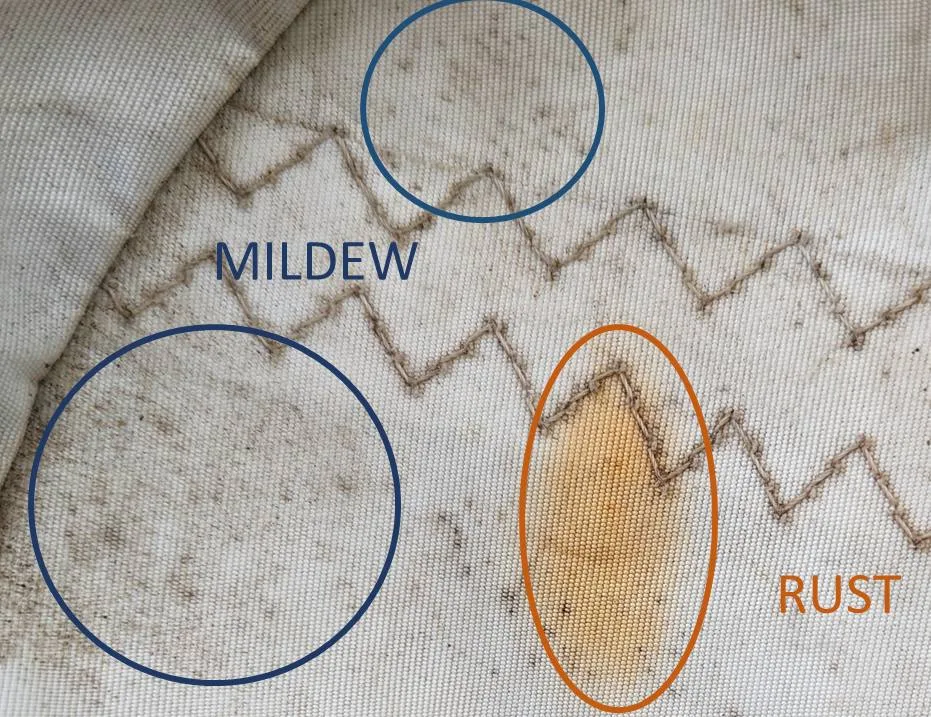
Mildew stains
Surface mildew stains are common and can be difficult to address but the good news is that this pesky fungus doesn’t harm your sails. According to sailmaker, Precision Sails, mildew may be ugly but it won’t affect sail performance.
How do you get mildew stains out of sails?
Surface mildew on Dacron sails can be cleaned with a properly diluted chlorinated bleach (sodium hypochlorite) solution—use the directions for laundry dilutions on the bottle.
Spray on, let it soak, gently rub with a soft bristle brush, and be sure to rinse off thoroughly.
But beware! Sailmakers warn that you should never use bleach on Kevlar or Nylon as it can seriously damage your sails.
Also, never combine bleach and ammonia as it combines to make a poisonous gas.
Mildew does tend to regrow but you can stay on top of it by regularly wiping down any new growth with white vinegar (being sure to rinse and dry sails afterward).
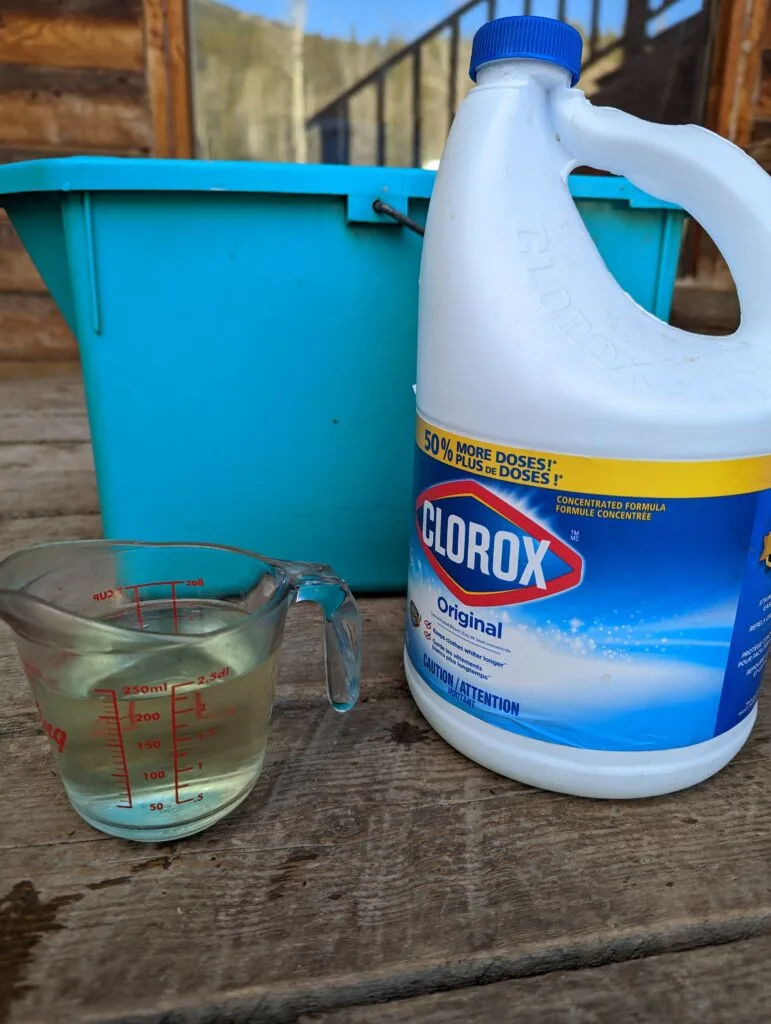
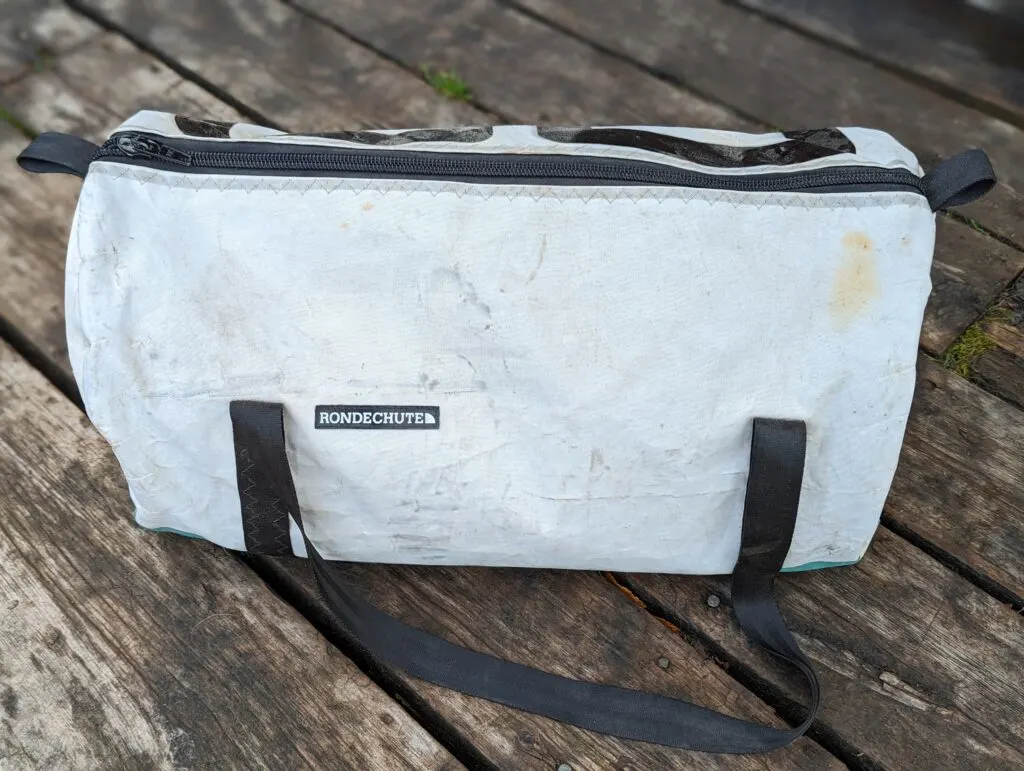
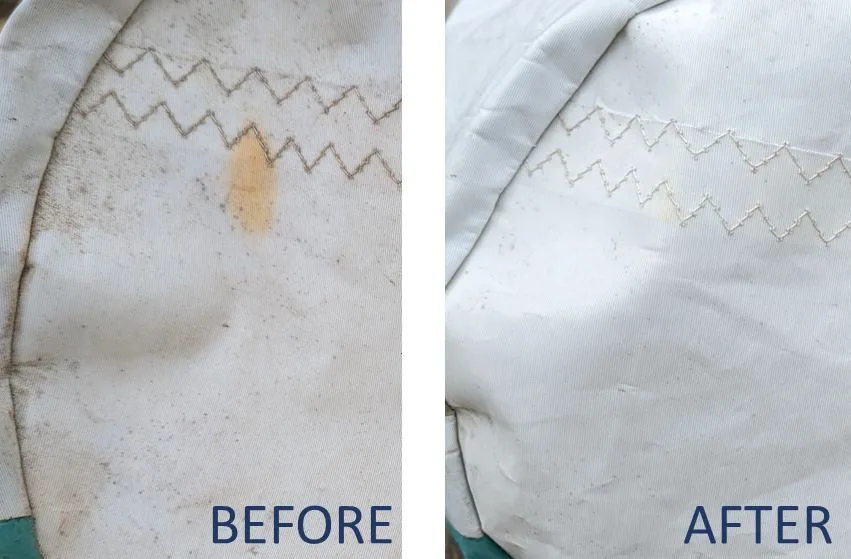
Rust stains
Unsightly rust stains can be caused by metal attachments or wires that come into contact with the sail.
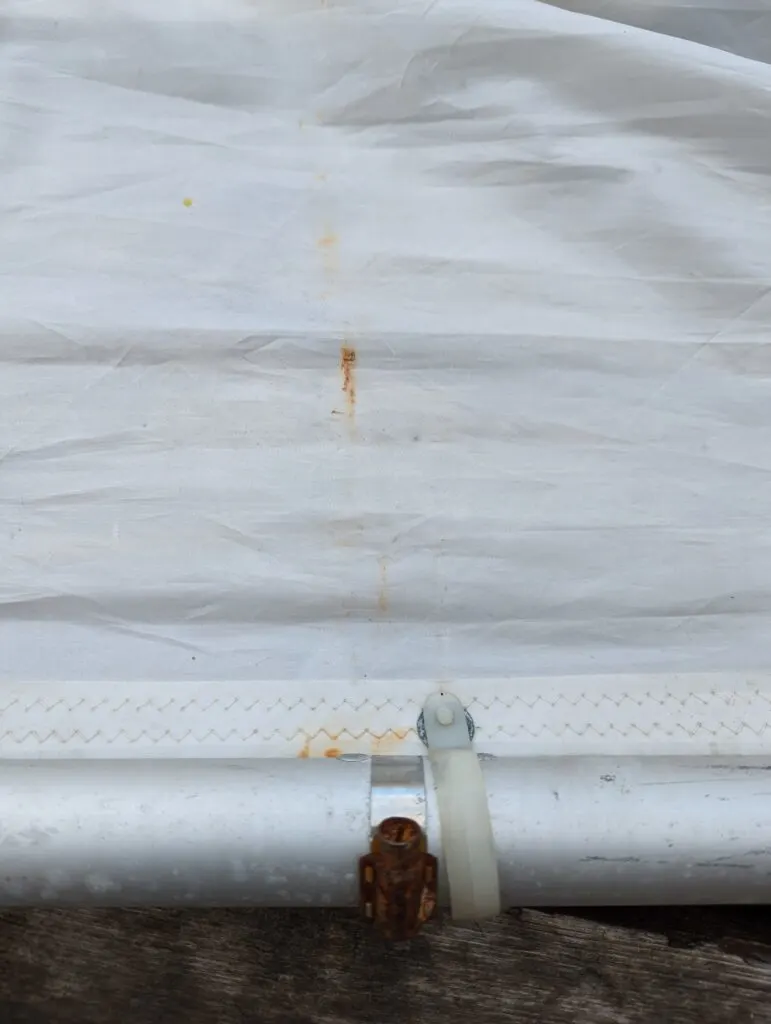
How do I remove rust from my Dacron sail?
For cleaning rust stains, Practical Sailor found CLR performed well in testing. They suggest diluting CLR 20:1 with fresh water and soaking for up to 15 minutes and rinsing. It’s a good idea to monitor the pH, you’ll want to keep the solution pH above 3 because Nylon sails can be damaged by strong acids. You can check this with pH strips.
I’ve also seen properly diluted Oxalic acid recommended for removing rust stains in various forums and magazines. However, it’s powerful stuff and should be treated with the utmost respect (e.g., wear the appropriate protective gear). You can find it at most hardware stores as it’s used for bleaching wood.
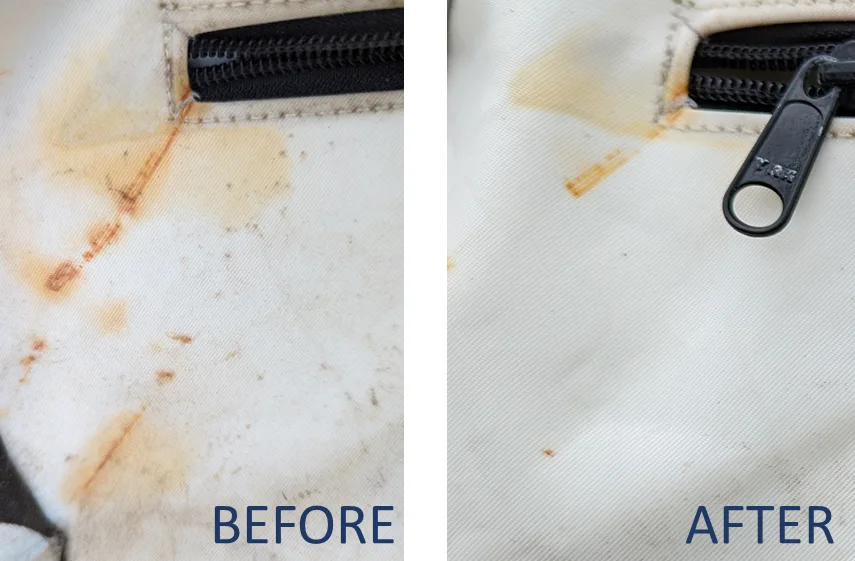
At first, it didn’t seem to be doing much but when I checked on it 15-minutes later I could see the rust stain lightening. All-in-all I’d say the results were pretty dramatic—though you can still see some staining. I imagine multiple treatments might remove it all.
Adhesive
Jim Grant, the founder of Sailrite, recommends 3M General Adhesive Remover or Goo Gone for removing number adhesives. You may need to do two or three rounds of application to remove it all.

Stain removal and setting your expectations
You can lighten sail stains significantly (as you can see in the before and after shots above) but don’t expect to remove them completely.
While you might be able to get improved results with stronger solutions and harsher methods, you’ll be risking damage to the sail material. In the end, sails are functional—we want them to perform well, appearance is secondary.
Given that stains can be so tough (if not impossible) to remove, there are a few things you can do to prevent staining in the first place.
Sail cleaning tips
There are several things you can do to prevent stains and prolong the life of your sail.
Inspect your sails regularly
Inspecting your sails is an important part of sail maintenance and vital to keeping them in good condition.
When we were on ocean passages, we looked over our sails daily! While we were more concerned with chafe and damage, it was also an opportunity to spot developing mildew and rust stains. The sooner you nip these problems in the bud, the better.
Regularly rinse your sails
Regularly rinsing is one of the best ways to maintain the life of the sail. It will prevent the build-up of dirt, salt, pollen, and pollution and reduce the need for more aggressive cleaning down in the future.
Thoroughly air-dry
Putting sails that are even slightly damp into storage is a recipe for mildew. Take the time to properly air-dry your sails.
Store your sails in a dry ventilated place
Consider taking them off the boat if you won’t be using them for a while.
Stay on top of mildew
Mildew will often reoccur in the same place. Treat mildew early and frequently to prevent the problem from getting worse.
Keep your sail cover in good shape
Check your sail cover for leaks, regularly clean it, and treat it with a fabric protectant like 303 Fabric Guard which will help it stay waterproof.
303 Fabric Guard is also a great product for protecting other marine fabrics like cushions, canvas, and boat covers. We used it on our bimini, dodger, and sail cover regularly and it seemed to keep our canvas in beautiful condition.

Consider a fabric protectant
Sailrite recommends 303 Fabric Guard for Dacron sails, though we’ve never tried spraying it directly on our sails. Namely because of the product cost and the square foot area of our sails.
Fiona McGlynn is an award-winning boating writer who created Waterborne as a place to learn about living aboard and traveling the world by sailboat. She has written for boating magazines including BoatUS, SAIL, Cruising World, and Good Old Boat. She’s also a contributing editor at Good Old Boat and BoatUS Magazine. In 2017, Fiona and her husband completed a 3-year, 13,000-mile voyage from Vancouver to Mexico to Australia on their 35-foot sailboat.

